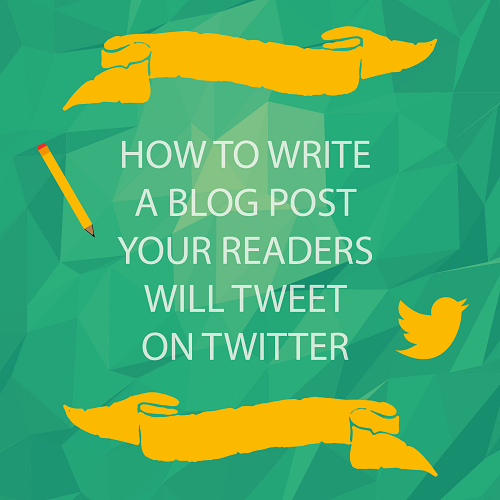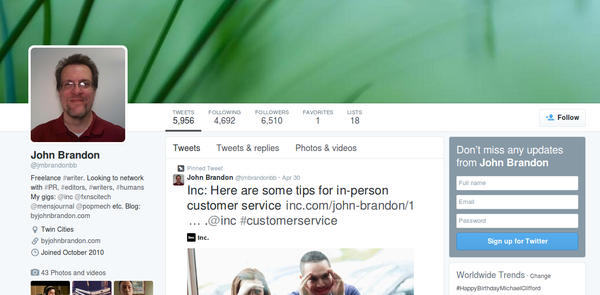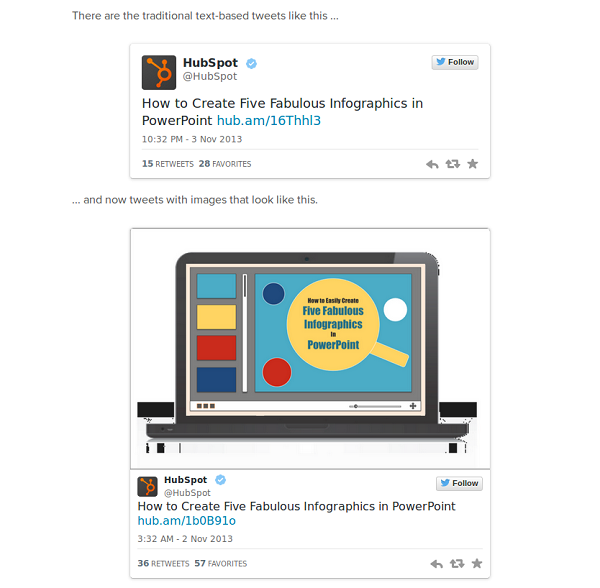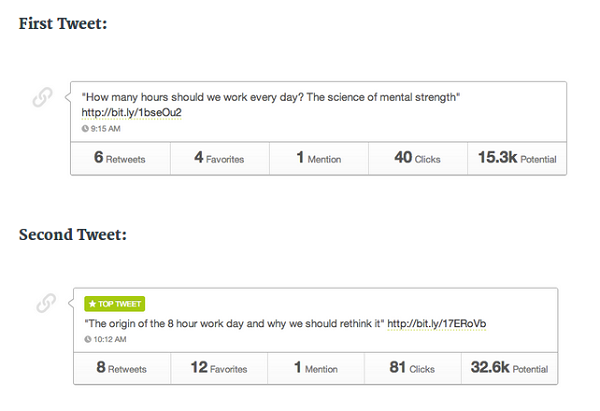Are you a number counter? Looking for ways to boost your traffic, clicks and sales? Would you like to write a blog post your readers will tweet on Twitter?
Well, you’re not alone. We’re all looking for greater numbers in likes, tweets, and followers after we create our blog.
It seems to be a big part of the successful bloggers’ game plan. So, why resist what works? There are plenty of top ranked, and top ranking, bloggers who are willing to share what works for them in the various social media arenas. Today, we’re going to focus specifically on the Twitter format, and how to write a blog post your readers will tweet on Twitter…
1. Write Great Content, and Re-Tweet Links
There’s nothing new about the necessity of writing outstanding content to build an audience. But, it’s such an important, fundamental point it bears repeating.

And nowhere is the value of great content more evident than in its shareability. If you have expectations of having your material shared, you simply must provide content worthy of it. It’s basic.
But not so basic is the practice of retweeting the link to your blog post several times a day. At Inc.com, John Brandon writes of experimenting with this tactic in his quest to reach 5,000 Twitter followers (he actually hit the goal).

His strategy was to repost his own links at least three times per day, targeting time zones outside of his own. The result was an increase of 130 followers over the course of a month which he attributes to the change and increase in his link tweeting schedule.
Why would this work? “People tend to make “drive-bys” on a Twitter stream and only check for recent activity.” By reposting throughout the day, you have a greater chance of your link being seen, clicked on and read. And if your content is spot-on, relevant and valuable, then your followers will tweet your post to their timeline, nicely completing the cycle of giving value and receiving it in return.
2. Write Tweetable Quotes
At Boost Blog Traffic, Jon Morrow is known for his skill and expertise in crafting superb headlines. And there are a lot of parallels in writing a strong headline and a tweetable quote. Both need to convey meaning in a manner that captures attention.
But unlike the headline, a tweetable quote doesn’t need to capture the idea of the entire post. Guest blogger at Boost Blog Traffic, John Corcoron, describes what makes a quote tweetable: “A short phrase or sentence that captures the essence of a speaker’s speech, talk, presentation, or other message.”
And, what are the components of a tweetable quote? Mr. Corcoron uses the model for sharing ideas found in the book Made to Stick:
a) Keep it simple: Find the core of your idea and strip it down to the bare bones.
b) Be unexpected: That doesn’t necessarily translate to outrageousness, but you do want to snap your readers’ attention out of its habitual comfort zone. You need to bust through the brains’ filters and scanning patterns to let new information in.
c) Be specific: Remember that the majority of your readers will not have the same skill level that you do. Give specific examples of your own experience for greater audience appeal.
d) Establish credibility: Build your authority with testimonials from established pros or use stats to back your claims.
c) Tap into emotions: Whether it’s empathy or anger, emotions carry a strong impact and can be used to connect with your readers at a gut level.
This particular post is a great study because it offers in-depth value on understanding and creating tweetable posts. And yes, it does have a clickable quote at the bottom.

Use a plugin like Easy Tweet Embed to make it simple and easy for your readers to tweet directly. With 450 tweets as a guest author, apparently this strategy is working.
You can use images for quotable tweets too. Brittany Leaning at Hubspot ran some tests on tweets with and without images to see what works best. She found that a tweet with an image received an increase of 36% in clicks and 41% for retweets.

So, given the popularity of tweets with images, using a quotable tweet as the caption to an image on your post could be a smart tactic to increase clicks.
3. Write powerful headlines and test
From Buffer, Kevan Lee gives us this post for 30+ Ultimate Headline Formulas. It must work because this particular post has received just shy of 3,000 tweets.
The beauty of a good headline is that you don’t have to invent a new format every time you write one, you simply follow a pre-existing formula. These headline blueprints have been crafted, honed and polished by marketing experts, and have repeatedly proven their value over time.
It’s really a matter of finding the format that works best for your post, then filling in the appropriate numbers, adjectives, keywords and promise. And then polishing and refining it until it captures the essence of your article.
Now, once you’ve created your sparkling headline, don’t stop. Do it again and conduct a simple A/B test on Twitter to determine which headline is going to work best for clicks.
Again from Buffer, Leo Widrich uses a simple formula to determine which headline will have the greatest appeal. By tweeting 2 headlines for the same post approximately an hour apart, once in the morning and once in the afternoon, he was able to determine the second one received twice as many clicks. This is an easy method to establish exactly what your readers are looking for in headlines.

Well, there you have a few current ideas you can incorporate in writing blog posts your readers will tweet.
Have you tested them out for yourself before? What tips do you follow while writing blog posts readers will tweet on Twitter? Please leave your comments below.
Hope you found the above post on how to write a blog post your readers will tweet on Twitter helpful. If you feel your friends and followers will find it useful too, please share it with them by clicking on the share buttons below.
About Cari Bennette
Written by Cari Bennette, a dedicated blogger and content manager at Jet Writers , company that provides high-quality writing help. Cari adores trying fresh writing tricks and testing interesting content ideas. Find her on Twitter.
